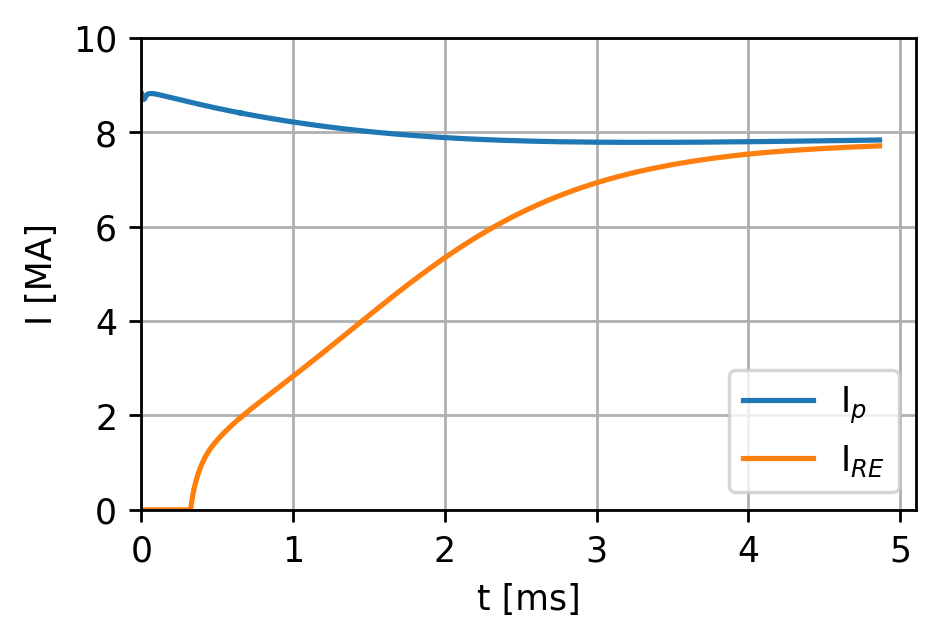
Runaways are energetic electron populations accelerated to relativistic energies during disruption events. Runaways can carry a significant amount of current and cause catastrophic damage to plasma-facing components. This project focuses on the computational modeling of runaways during disruption events on the SPARC and ARC tokamaks, and on the mitigation of these runways using the runaway electron mitigation coil (REMC).
Runaway modeling in tokamaks is multiscale problem, requiring knowledge of the kinetic evolution of the runaway population, and self-consistent feedback between runaways and the magnetohydrodynamic (MHD) activity of the bulk plasma. We tackle this multiscale problem using the extended MHD code M3D-C1, which couples runaway physics to the MHD equations using a reduced fluid-runaway model that incorporates approximations to the relevant kinetic physics. This unique framework enables self-consistent calculations of runaway generation and its effect on bulk MHD activity, as well as evaluation of mitigation strategies, such as the runaway electron mitigation coil (REMC). The REMC is a passively driven magnetic coil that prevents runaway beam formation through generation of perturbed magnetic fields. Through self-consistent treatment of the runaway and MHD activity using three-dimensional M3D-C1 simulations, we aim to demonstrate the efficacy of the REMC in mitigating runaway electrons on the SPARC and ARC tokamaks.
This project is led by Postdoc Rishabh Datta, and supervised by Alex Tinguely and Cesar Clauser, with close collaboration with the Princeton Plasma Physics Laboratory (PPPL) M3D-C1 team, led by Nathaniel (Nate) Ferraro and Stephen (Steve) Jardin.